Wool Works for Melin Tregwynt
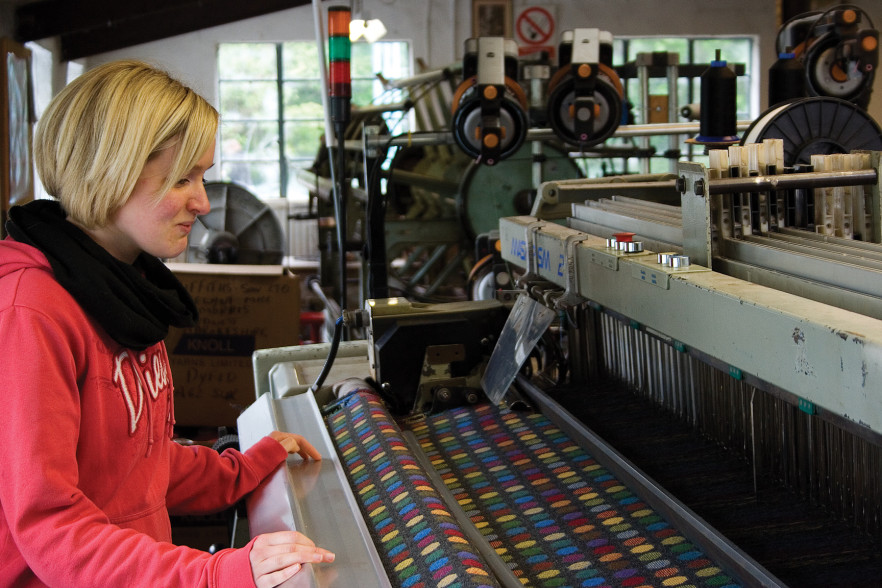
Melin Tregwynt is synonymous with the craft and cultural heritage of Wales. Their unique range of interior textiles can be found in hip hotels and design-led stores, on film and TV.
Alongside their own stock ranges the company specialise in customisation, short runs and exclusive designs for hotels, designers and specifiers.
They have worked with John Lewis, Heals, Liberty, Muji, the BBC, SCP, Designers Guild, Margaret Howell, Tate Britain, The V&A, Commes Des Garçons, Mulberry and more, who have all commissioned exclusive ranges.
Earlier this year the Cambrian Mountain Wool CIC (inspired by His Royal Highness The Prince of Wales to help sustain traditional upland farms and communities in Wales) chose Melin Tregwynt to help launch their new range of Welsh Knitting Wool from the flocks of Wales.
The mill is now working with Cambrian Mountain Wool CIC on a range of Welsh weaving yarns and is also developing a new range of contract upholstery fabrics commissioned for launch in 2017.
We caught up with Eifion Griffiths, whose family bought the mill over 100 years ago, and designer Sophia Watts to find out more.
Thank you for taking part in our latest #WoolWorks interview! Please introduce your business:
Melin Tregwynt is a family company, weaving records at the mill go back to the 1839 census, but Henry Griffiths, my grandfather bought the mill for £760 in June 1912!
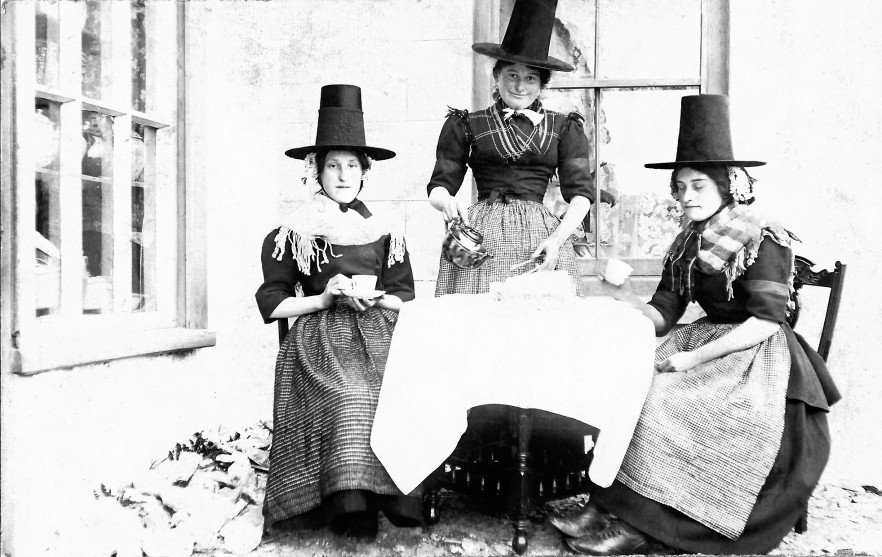
Melin Tregwynt mill workers from the archive
Originally supplying the local farming community, the mill now supplies customers worldwide and today employs over thirty people weaving doublecloth fabrics in the traditional way.
Over the last five years sales and production have more than doubled.
Being a family company gives us a heightened awareness of our own history and tradition. We see the products as a continuation and each generation has reinvented the tradition to suit its market.
Twenty years ago we didn’t emphasize the traditional Welsh roots of our fabrics. We sold our work on its appearance and design. These days we find that the authenticity and the story behind the company are equally important.
Welsh weaving is known for its instantly recognisable checks and plaids – is there any meaning behind these designs?
Yes, every mill has its own patterns and the ones that we weave are exclusive to us.
The patterns use traditional motifs, some of which have names: tables, roses, stars and snowballs.
Our St David’s Cross design was an in-house modification of a 1960’s design but in its simplified form it goes back many hundreds of years.
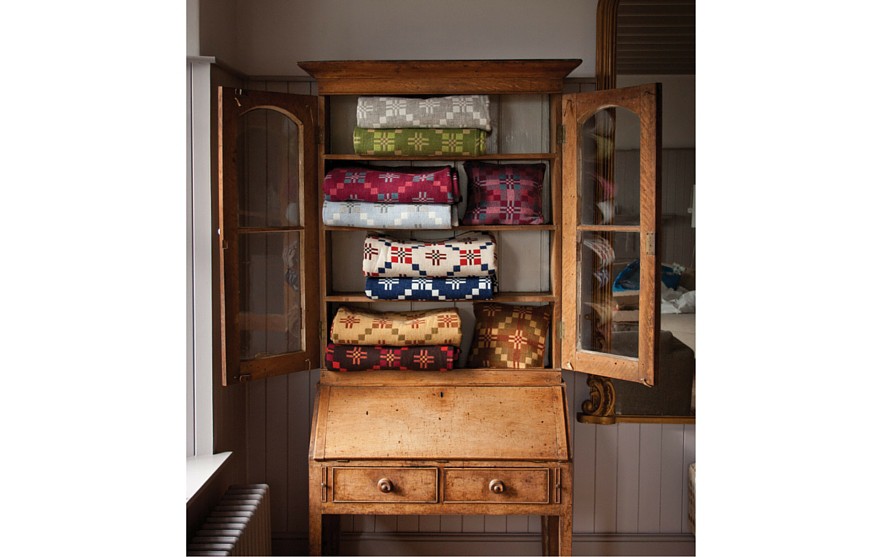
The St David’s Cross design shown in a range of colours
Your mill has been weaving for well over 100 years, how much of your range is based on historical designs versus new collections?
We use our archive as the basis for our collections and re-colour existing designs to give them a contemporary edge.
Recently we’ve worked with SCP who commissioned Donna Wilson to produce a new range of traditional doublecloth bedspreads and with artist Jacqueline Poncelet to weave a specially commissioned fabric for Tate Britain.
We also create new designs in-house – for example ‘Patagonia’ commemorates the 150th anniversary of a Welsh colony in Patagonia.
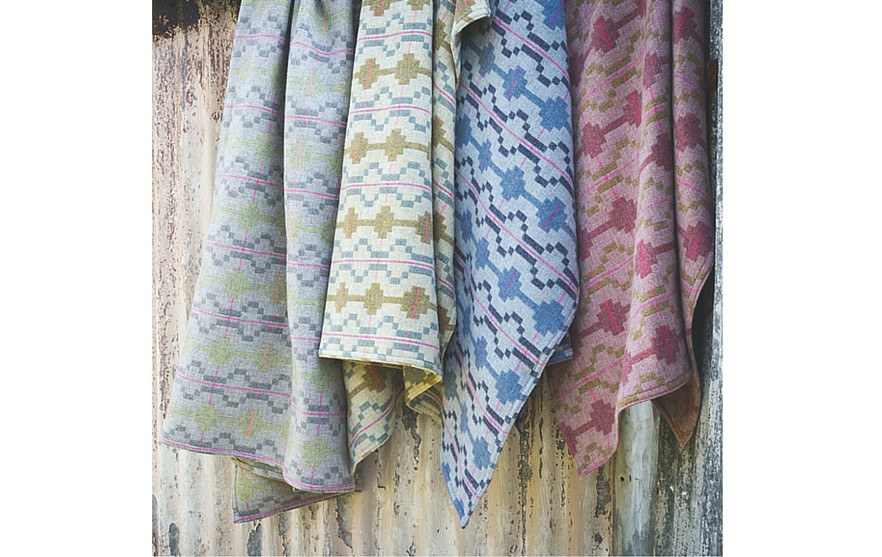
The Patagonia Collection
We have also commissioned well-known textile designers like Kerry Stokes and Laura Thomas to create new patterns.
Please tell us about the process of weaving your cloth…What looms do you use? How much cloth would you weave in a typical day?
We have five rapier looms, two are set up for wide weaving giving us cloth up to 260 cms wide, and we also weave at 200cm and 150cm. We aim to weave 45-60m cloth (per loom) per day to achieve a minimum of around about 17,000m annually.
If my grandfather were to come back and visit the mill today he’d recognise what was going on in the mill as being familiar.
Weaving hasn’t changed much over the centuries, but if he went into the office he’d have no idea what was happening.
We try to combine the traditional values of what we make with the modern technology that enables a small mill in Pembrokeshire to sell all over the world.
When planning a new fabric are you inspired by your archives or more modern references? Please tell us a little bit about the creative process you go through when designing something new
With a vast archive of beautiful patterns it would be a shame to keep them in the past so the majority of the time our new fabric collections are refreshed traditional doublecloth patterns.
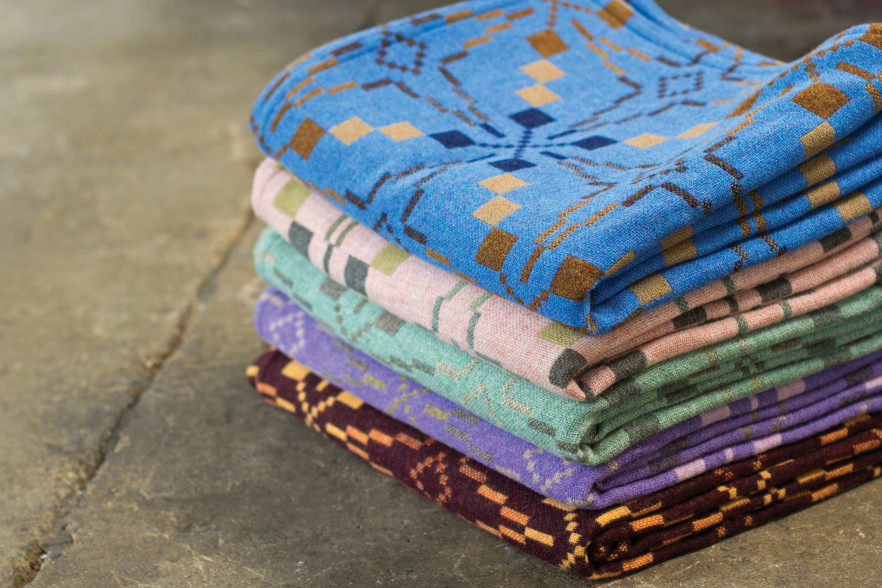
The new Vintage Star collection
Colour is also very important to our brand, and we love to weave with fresh colour palettes and exciting combinations. We are lucky to have such a beautiful landscape surrounding our mill in Pembrokeshire, which provides endless inspiration for new fabric designs.
We try to keep current trends on our radar, but we do not follow these directly. Rather we want our fabrics to transcend time and we would like our products to be items to treasure.
Can you take us through some of your favourite fabrics? Please tell us a little about why they’re so special to you
Sophia Watts: My favourite fabric is our Madison Gold; the combination of the simple geometric repeat and choice of yarn shades creates a stunning visual effect that just works.
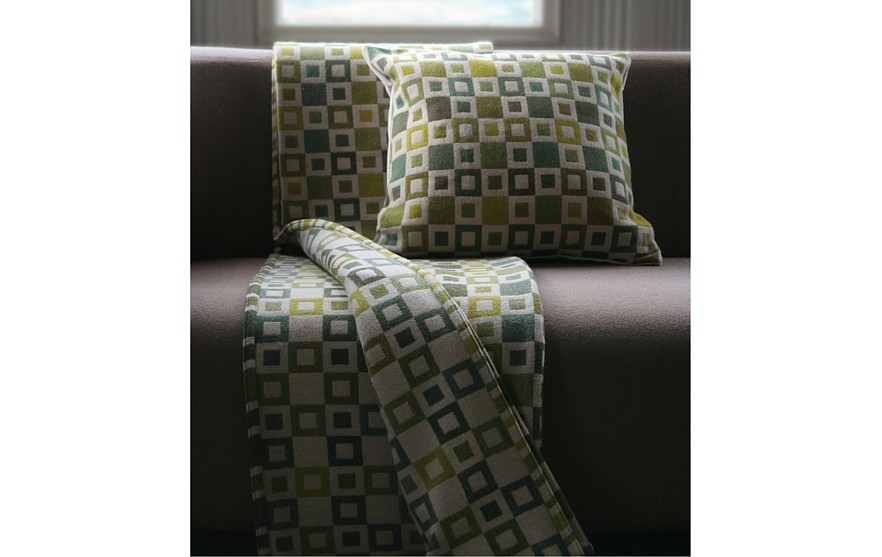
Madison Gold cushion and throw
I also love the beautiful patterning effects in the traditional Doublecloth designs, and how these can be enhanced and transformed by colour, for example our Knot Garden and newly-reintroduced Vintage Star designs.
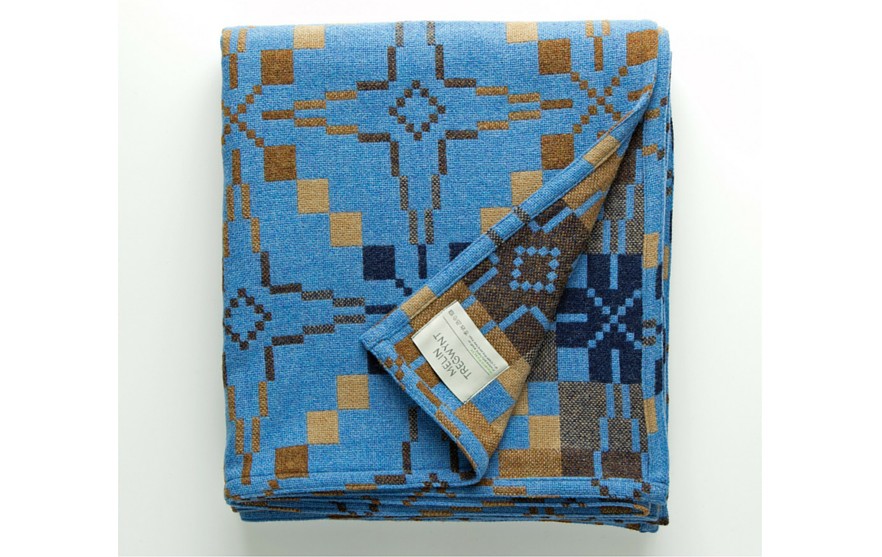
The varying scales of patterns that we weave allow us to create both intricate detail and bold impact in our fabrics, both of which I think are key to a successful design.
Eifion Griffiths: I also like the Madison Gold because it’s the first doublecloth design/colourway we developed in-house after I took over the running of the company.
It was based on an old Maxi skirt my mother used to wear in the 70s and we updated the pattern and colourway and it proved amazingly popular and still sells well today.
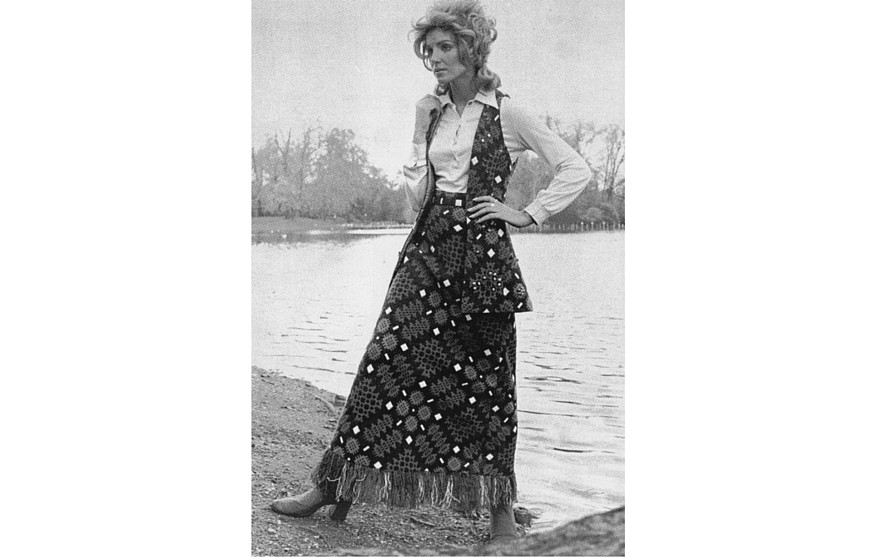
Welsh textiles are incredibly popular at the moment and in the past few years you’ve shown at Maison et Objet, Salone Milan and Tokyo Design Week – have you found a new appreciation for your textiles amongst the design community?
Yes, I think there’s a huge interest in the authentic, and traditionally woven textiles can give a sense of softness and warmth in modern interiors.
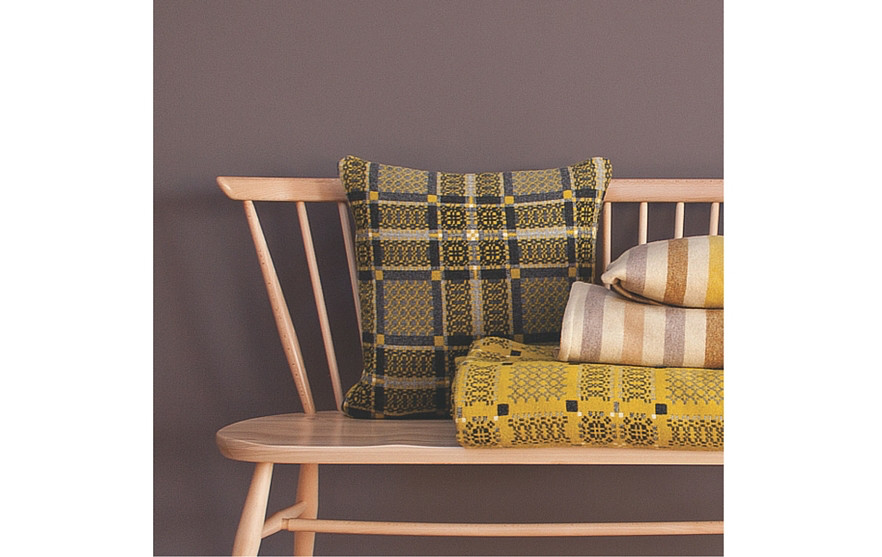
It’s also suits the Mid-Century Modern aesthetic which is very popular at the moment.
There’s also much more interest today in the story behind the product not just the look or feel.
Is everything Melin Tregwynt produces woven on site?
Yes every metre of cloth is woven here in our factory. We are open all year and visitors can watch us weaving on weekdays.
Our products are rooted in one place, so the mill’s location is very important to us.
Theoretically we could move to anywhere, really, but I can’t imagine doing that. For the same reason, we still use traditional methods – it’s all part of the authenticity. And, arguably, it’s this authenticity and strong Welsh branding that’s been the key to the company’s success
Weaving is a highly skilled occupation, can you tell us about the training you went through?
Eifion trained as an architect – all our staff have been trained on the job as we are so far from the centres of weaving in the UK.
We take staff on based on their attitude and believe that if they are interested they will be able to learn as they work.
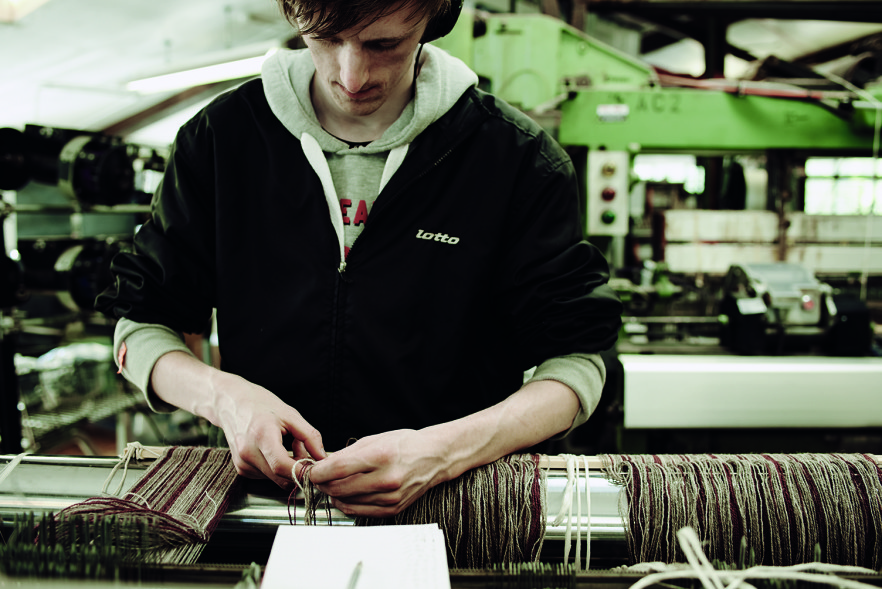
We offer work placements to one or two design students every year and some of these have spent up to a year with us gaining insight into the differences between handloom designs and small batch production.
How do you hand your skills down to the next generation? Do you have apprentice weavers at the mill?
We have had two apprentices over the last three years – both participated in the Creative Skillset Apprenticeship Scheme and have stayed on to become valuable members of the team.
Going forward we need to be able to:
- Recruit and retain able young people to replace those retiring
- Find colleges and trainers able to deliver relevant training
- Improve the quality of in-house training
- Find apprentices with the right practical skills and enthusiasm for the work
Can you tell us about the new Welsh design talent that’s on your radar? We recently came across Coracle and love their modern take on traditional cloth – are there others you can recommend?
Two Welsh designers – both of whom we have known since they attended placements at Melin Tregwynt as students – are producing fantastic design products here in Wales.
Louise Tucker designs and hand-weaves intricate lighting pieces in wood – inspired by the effects of light and shade in the landscape – which combine traditional Basketry and Weaving skills with contemporary design.
Sian O’Doherty hand-makes fashion accessories and interior products in her Pembrokeshire studio. Her knitted and woven designs are inspired by the beauty of the landscape surrounding her home, and the traditions and techniques of textiles in Wales.
Lastly do you have any words of wisdom for the next generation of textile students and local youngsters interested in a career as a weaver?
Weaving has a long tradition in Wales and the skills involved in the process – from spinning yarn to the woven fabric – have been passed down through the generations.
Over the last twenty years the UK textile industry and weaving in Wales has suffered as work has disappeared overseas. This means that the industry has declined in Wales with less opportunities available.
Today we are beginning to see an improvement as the consumer is learning to value local, traceable production.
In a market dominated by globalisation, mass production and outsourcing, a growing number of people are seeking out the local and authentic. Companies that have stayed close to their roots are prospering even in the current economic climate.
However this is almost too late to halt the rapid disappearance of skills and an ageing workforce. There’s a need to get design students and industry apprentices to learn the traditional skills associated with the textile industry and build on that knowledge before all that expertise is lost forever.
Textiles – whether woven, knitted, fused or felted – are integral to all our lives, and in this digital world it is important to keep those traditional skills associated with artisan crafts alive and to encourage interest in the next generation.
The more individuals learning these skills, the more potential there will be for locally produced goods to market and hopefully more career prospects for local youngsters. The current interest in the provenance of consumer goods can only help the growth of skilled industries where these are present.
So seek out opportunities and gain as much practical experience as you can; you never know what paths may open up or where they may lead…!
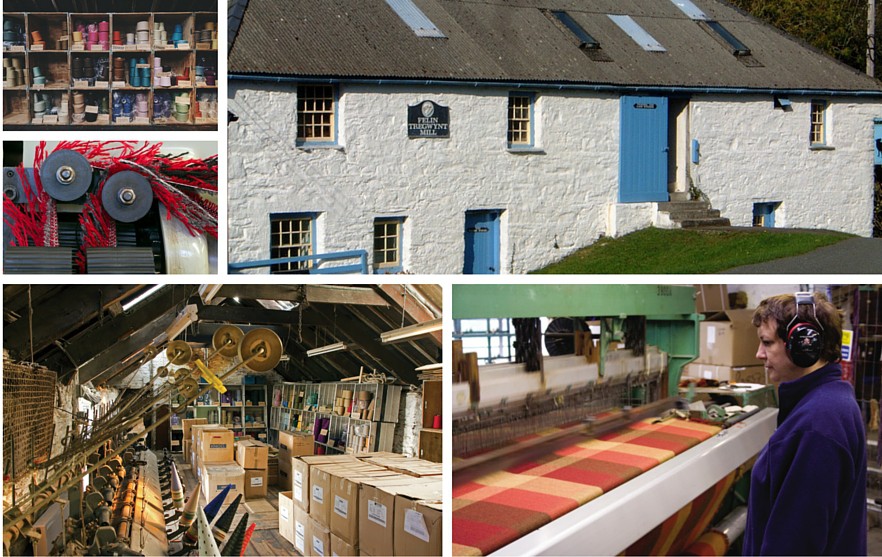
For more information on Melin Tregwynt visit their website – or take a trip to see the looms in action, visitors are welcome and address details can be found here
You can also follow Eifion on twitter @eifiongriffiths and Instagram




